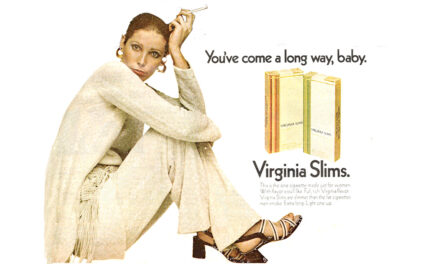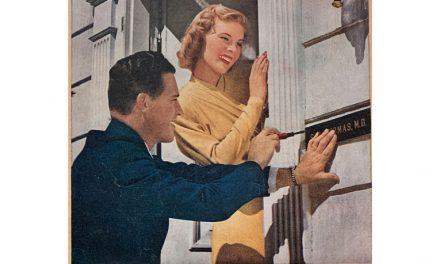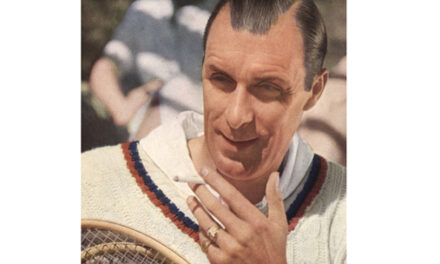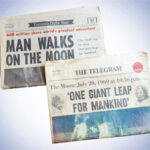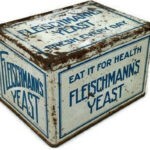Scientific tests – confirmed by three independent consulting laboratories – prove Lucky Strike is mildest of six major brands tested.
And if the findings of these “independent laboratories” isn’t enough you can believe movie star Janet Blair when she says: “I enjoy the mild, smooth taste of Lucky Strike.”
Readers of the day knew Janet Blair – she endorsed many products – but these independent laboratories are another matter. They aren’t identified. Nor are the six major brands tested. But two endorsements in a single advertisements! From scientists and a movie star. You’ve just have to believe them. This is real truth in advertising!
It was common for cigarette companies to cite so-called scientific tests to support the manufacturers’ claims. There’s a 1939 advertisement for Camels in our Printing Times that claims: “Cigarettes were compared recently … sixteen of the largest-selling brands … under the searching tests of impartial scientists.” Well, you have to believe that, don’t you! Sixteen competitive brands; searching tests; impartial scientists. Followed by this seemingly scientific message L.S./M.F.T
Smokers of the day accepted that “There’s never a rough puff in a Lucky! So round, so firm, so fully packed – so free and easy on the draw.”


This advertisement appeared on the back page of Collier’s Magazine, July 29,1950, a time when photographs were displacing drawings, when engravers and printers were acquiring skills in reproducing photographs in print. This advertisement is also notable in that the photograph of Ms. Blair has been superimposed on the coastal scene.
Once you accept the so-called scientific tests above
it’s easy to accept the headline/subhead in this
Lucky Strike advertisement from a 1949 Saturday Evening Post!
Smoke a Lucky to feel your level best!
Luckies’ fine tobacco picks you
up when you are low . . .calms
you down when you are tense!
It isn’t one of Luckies best advertisements! The model in the retouched illustration — today we would say it was Photoshopped— isn’t identified although she has that Movie Star quality.
Her image is close cropped and superimposed on the composite illustration. Absurdly, she is smoking a cigarette as she hurtles down the mountain side on a sled.

The copy is repetitious, repeating the headline and the subhead and the copy isn’t any more credible than the smoke from the cigarette in the model’s hand.
What is “level”?
The headlines are combined and restated to read “Luckies’ fine tobacco puts you on the right level – the Lucky level — to feel your level best, do your level best.”
This is followed by incorporating the product slogan into the next paragraph:
That’s why it’s important for you to remember that LUCKY STRIKE MEANS FINE TOBACCO — mild, ripe, light tobacco that makes a thoroughly enjoyable smoke.
Now it is back to the ubiquous endorsements. This time it isn’t scientists.
No wonder more independent tobacco experts—auctioneers, buyers and warehousemen— smoke Lucky Strike regularly than smoke the next two leading brands combined.
The copy then repeats the subhead and calls for action by the readers:
“Light up a Lucky! Luckies’ fine tobacco picks you up when you’re low, calms you down when you are tense. So get on the Lucky level where it’s fun to be alive. Get a carton of Luckies and get started today

Vintage Ad Browser displays many cigarette and tobacco advertisements dating back to the 1800s
The Guardian newspaper a decade ago had this to say about smoking.
In 1950s America cigarette smoking was the epitome of cool and glamour. Hollywood icons such as James Dean and Humphrey Bogart were never without one. Screen beauties such as Audrey Hepburn and Marlene Dietrich made smoking look sensual and sophisticated. Even a future president — Ronald Reagan — was handed free packs of Chesterfield during his B‑movie days. By the late 1950s around half of the population of industrialised nations smoked — in the UK up to 80% of adults were hooked. The product was cheap, legal and socially acceptable.


